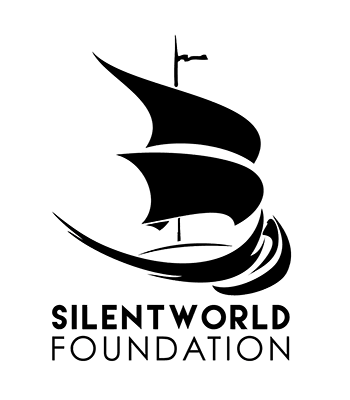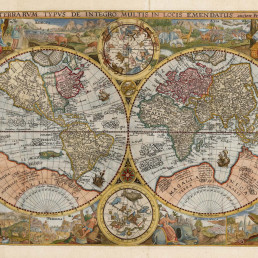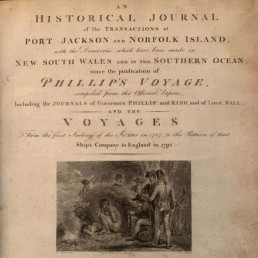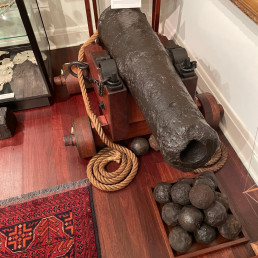
Name/TitleView of Batavia Roads
About this objectView of the inner roadstead of Batavia, looking south towards the old city (present day Kota), offering a clear view of the Castle and the Sunda Kelapa, the Harbour Canal and the Water Castle, as well as the VOC shipyard (now VOC Galangan Café at Jalan Kakap). Also recognizable are the Town Hall (now the Jakarta History Museum) and the dome of the Dutch Church (present Taman Fatahillah). The Blue Mountains (volcanoes south of the Buitenzorg, present-day Bogor) are in the background.
At the left we see the official admiralty ship recognizable from the state’s flag and pennon, just firing a cannon, hence the gun smoke. From this guard ship, every morning after the reveille [the official trumpet call to wake up] the morning shot was fired, while in the evening after the tattoo [the official trumpet call to signal the end of the day] the evening shot was fired. Sometimes more than a hundred ships were anchored at the roadstead, until 1799 the majority ships of the VOC. Every ship had its own victualling prao which traded with the crew – one is visible near the barge at the centre-right. In the middle is a Commander’s sloop, which, to distinguish it from the others, also flies the Flag of the State.
Martinus Schouman was a renowned and prolific painter of marine landscapes. He was born in Dordrecht in the Netherlands, was a member of the Dordrecht artist’s society “Picturia” and the Royal Society of Fine Arts in Brussels and spent a few years in Batavia in the early 19th century.
MakerMartinus Schouman - Artist
Maker RoleArtist
Date Madec1805
Period19th century
Medium and MaterialsWatercolour on wove paper
Place MadeBatavia (modern Jakarta), Indonesia
Inscription and MarksSigned lower left in pencil “M. Schouman 1805”
Measurements380mm x 450mm
Object TypeMaritime Paintings
Object numberSF001166
Copyright Licence![]() Attribution - Non-commercial - No Derivatives (cc)
Attribution - Non-commercial - No Derivatives (cc)
Explore by category
Maps and Charts
Date range: 1541-1836
Ship Models
Date range: 1629-1890
Maritime Paintings
Date range: 1793-1849
Manuscripts and Ephemera
Date range: 1768-c1850
Medallions & Convict Tokens
Date range: 1619-1880
Landscapes
Date range: 1768-c1850
Books
Date range: 1694-c1850
Currency and Shares
Date range: 1624-1823
Printed Material
Date range: 1541-1836
Maritime Archaeology
Date range: 1629-1854
Curator's corner
New acquisitions, staff favourites and curios
The mug is decorated with an underglaze and a blue transfer print. On the body, it is titled ‘Emigrants to Australia’. This type of body and glaze was discontinued by 1840. Comparison of the handle shape and the profile of the foot, point to the attribution of manufacture by the Davenport Factory.
Delta was a ship-rigged vessel with two decks and three masts. It was built in Dordrecht, Netherlands in 1839 at the shipyard of Jan Schouten and registered in the same port. Its hull was constructed of oak and sheathed in ‘yellow metal’. Delta was owned by H. van der Sande at the time of its loss and was engaged as a cargo trader.
The Delta carried 29 crew and passengers, while sailing from Melbourne to Batavia in ballast when wrecked at Kenn Reefs on 30 May 1854 whilst under the command of Captain J.G. Kunst. This vessel loss supports the pattern of shipwrecks located on a well-travelled shipping route that was poorly charted until the mid-nineteenth century. The crew of the Delta could see four other shipwrecks at Kenn Reefs at the time of their vessel’s loss.
Important image of a ship associated with Matthew Flinders, that would shortly become one of the most famous early shipwrecks in eastern Australian waters. This is a fine ship’s portrait, by one of the great exponents of the art


















